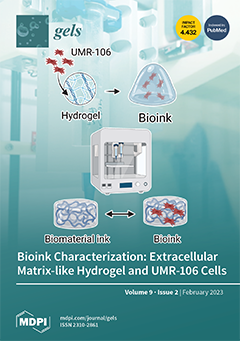Retrogradation is defined as the recrystallization or realignment of amylose and amylopectin chains upon cooling of gelatinization starch gels. The storage conditions such as the storage time and temperature are crucial factors that influence and govern the degree of retrogradation and in turn,
[...] Read more.
Retrogradation is defined as the recrystallization or realignment of amylose and amylopectin chains upon cooling of gelatinization starch gels. The storage conditions such as the storage time and temperature are crucial factors that influence and govern the degree of retrogradation and in turn, affect the formation of resistant starch and alteration of thermal and rheological properties. This article investigates the effect of storage time and temperature on the properties of retrograded rice starch. Rice kernels of five different indigenous varieties, namely Diasang lahi, Khaju lahi, Dhusuri bao, Omkar, and Bili rajamudi were cooked by boiling in water and stored at 4 °C and −20 °C for 6 and 12 h, respectively. Differential scanning calorimetry (DSC) studies revealed in raw form that Bili rajamudi exhibited the highest peak gelatinization temperature (T
p, °C) at 79.05 °C whereas Diasang lahi showed the least T
p at 56.12 °C. Further, it was indicated that the T
p and degree of retrogradation (DR%) also increase with increasing time and decreasing temperature of storage. All samples stored at −20 °C for 12 h exhibited the highest degree of retrogradation DR%. Amongst all five varieties stored at −20 °C for 12 h, Omkar exhibited the highest %DR, followed by Bili rajamudi, Khaju lahi, Dhusuri bao, and Diasang lahi. A negative correlation was also established between T
p and resistant starch content (RS%). It was also observed that the resistant starch (RS%) content increased with the increasing time and decreasing temperature of storage. A strong negative correlation was observed between RS% and non-resistant starch (NRS%). Further, rheological studies indicated that retrogradation also affects the viscosity and dynamic rheological properties of starch. In this study, it was evident that extending storage duration from 6 to 12 h and lowering temperature from 4 to −20 °C impact retrogradation of rice starch, which in turn affects the starch’s gelatinization, digestibility, and rheology. Rice starch retrograded at lower temperatures for a longer period could prove to be extremely beneficial for development of food products with better textural properties and high RS content or low glycemic index.
Full article


